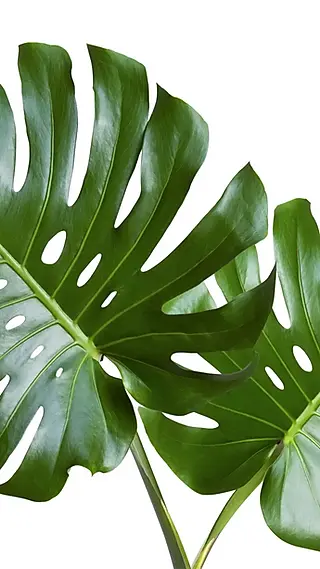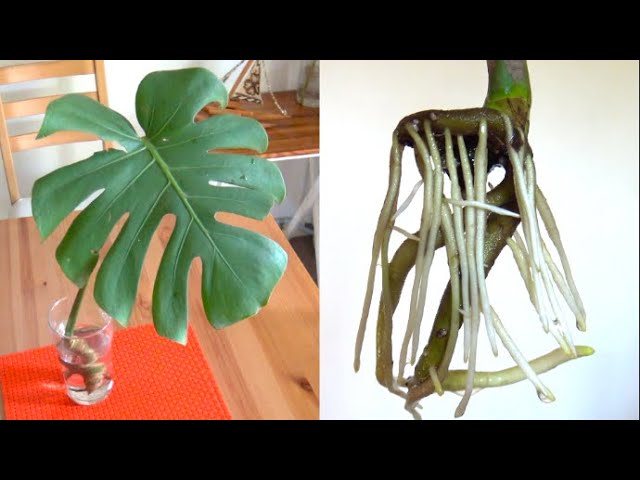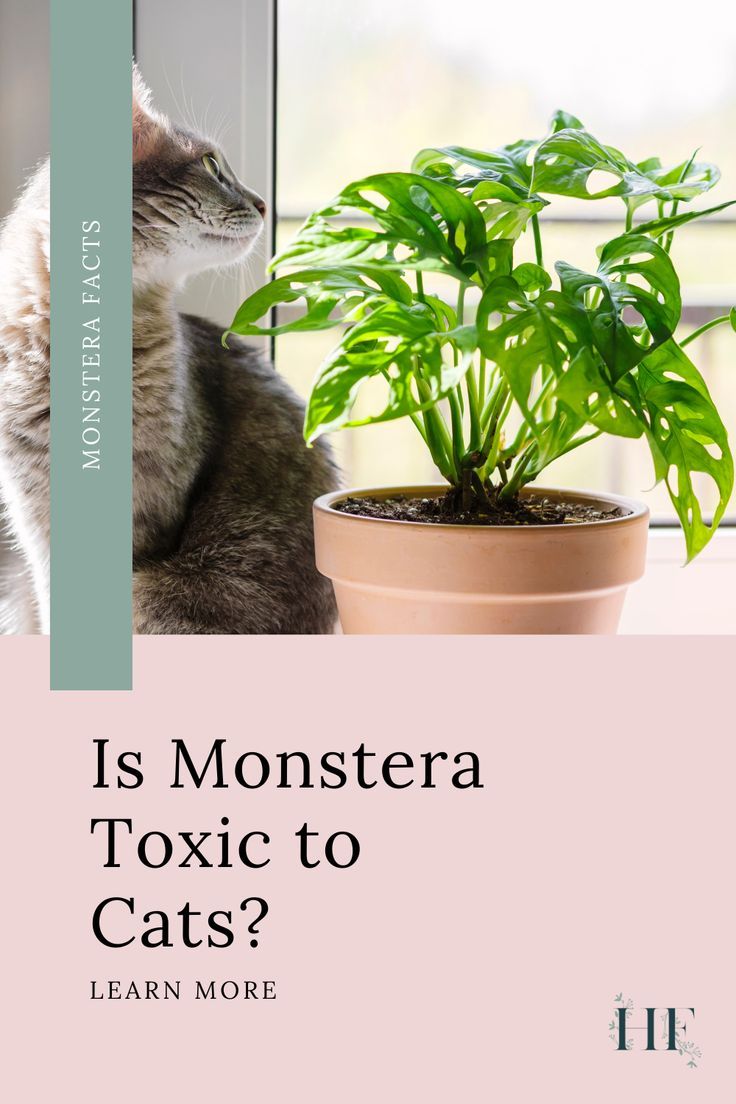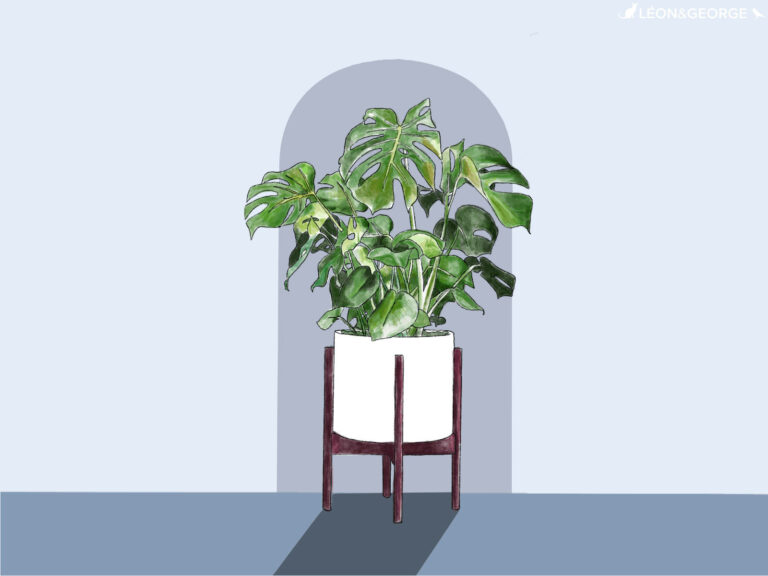Understanding Monstera Plant Leaf Curl
Monstera plants, with their iconic split leaves, can sometimes show signs of distress through curling leaves. Understanding the reasons behind this can help in maintaining a healthy plant.
Dehydration as a Cause
One of the primary reasons Monstera plant leaves start to curl is dehydration. When a Monstera lacks sufficient water, it can cause the leaves to curl inward. Ensuring a proper watering routine is essential. Check our guide on monstera plant watering for detailed instructions.
Pest Infestation Effects
Pest infestations can also lead to leaf curling. Common pests like spider mites, aphids, and thrips feed off the plant, causing physical damage and physiological stress that results in curled leaves (Monstera App). Regularly inspecting your plants and using appropriate treatments can help manage pest issues. Read more on identifying monstera plant bugs.
Impact of Temperature
Temperature extremes, both high and low, can negatively affect Monstera plants. Excessive heat can cause leaves to curl downwards due to stress and water loss (Spider Farmer). Maintaining an optimal temperature range is crucial for plant health. For more on ideal temperature conditions, see our article on monstera plant temperature.
Light-Related Leaf Curl
Inadequate or excessive light can also cause leaf curling in Monstera plants. Insufficient light causes the plant to stretch and curl its leaves as it tries to reach light sources. On the other hand, too much light can result in leaf scorch and curling due to stress. Balancing light exposure is key. Learn more about managing light conditions in our guide on monstera plant sunlight.
Understanding these causes helps in taking preventive measures and ensuring the well-being of your Monstera plant. For further information on proper Monstera plant care, feel free to explore our comprehensive guides on monstera plant care, monstera plant propagation, and monstera plant pruning.
Addressing Monstera Leaf Curl
Monstera plant leaves curling can be attributed to various factors, from watering practices to environmental conditions. Understanding and addressing these factors is essential for maintaining healthy foliage.
Overwatering vs. Underwatering
Watering practices play a crucial role in the health of monstera plants. Both overwatering and underwatering can cause leaf curl. Overly soggy soil, poor drainage, or frequent watering can lead to root rot, causing curling or yellowing leaves. Conversely, underwatering can cause the leaves to curl as the plant attempts to retain moisture.
Indicators:
| Condition | Symptoms | Action Required |
|---|---|---|
| Overwatering | Soggy soil, yellowing leaves, root rot | Reduce watering frequency, improve drainage |
| Underwatering | Dry soil, curling leaves, dry tips | Increase watering frequency, check soil moisture |
More information on proper watering techniques can be found here.
Importance of Proper Humidity
Monstera plants thrive in humidity levels ranging from 40% to 60%. Low humidity can cause leaves to curl inward to reduce water loss. Creating a humid microenvironment or using a humidifier can help maintain optimal moisture levels.
| Humidity Level | Effect on Leaves | Solution |
|---|---|---|
| < 40% | Curling inward, dry edges | Use a humidifier, mist leaves |
| > 60% | Unlikely to curl | Manage ventilation |
Learn more about regulating humidity for your monstera here.
Managing Sunlight Exposure
Monstera plants prefer indirect sunlight. Exposure to direct sunlight can cause leaves to curl or scorch (The Spruce). It’s important to ensure your monstera is placed in an area with bright, indirect light.
| Light Exposure | Effect on Leaves | Solution |
|---|---|---|
| Direct Sunlight | Curling, browning, scorching | Move to a location with indirect light |
| Insufficient Light | Slow growth, larger leaves | Increase exposure to indirect light |
For more tips on managing sunlight exposure, visit here.
Soil Health and Nutrient Balance
Soil health is essential for monstera plants to thrive. Poor drainage or a lack of nutrients can lead to curling leaves. Using a chunky potting mix ideal for aroids and applying balanced houseplant fertilizer during the growing season can improve soil conditions (The Spruce).
| Soil Condition | Effect on Leaves | Solution |
|---|---|---|
| Poor Drainage | Curling, root rot | Repot with well-draining mix |
| Nutrient Deficiency | Yellowing, curling | Apply balanced fertilizer |
To learn about soil health and proper repotting practices, visit here.
Under the right conditions, monstera plants can grow beautifully. Address any leaf curl issues by consistently monitoring and adjusting care practices. For additional resources, check out articles on monstera plant care and monstera plant benefits.
Solutions for Monstera Leaf Curl
Monstera plants are beloved for their large, unique leaves, but when those leaves start to curl, it indicates that something is amiss in their care. Here are various solutions to address the common causes of Monstera plant leaves curling:
Adjusting Watering Practices
One of the primary reasons for curling leaves on a Monstera plant is improper watering, either overwatering or underwatering.
Steps to Adjust Watering:
- Check soil moisture by sticking fingers a few inches into the soil.
- Ensure the pot has proper drainage to prevent root rot.
- Only water when the top 2-3 inches of soil are dry.
| Problem | Watering Solution |
|---|---|
| Overwatering | Reduce frequency; improve drainage |
| Underwatering | Increase frequency; ensure consistency |
Enhancing Humidity Levels
Low humidity can lead to curled leaves as Monstera plants are native to the humid jungles of Central America. Increasing humidity around the plant can prevent such issues.
Ways to Enhance Humidity:
- Use a humidifier around the plant.
- Group moisture-loving plants together.
- Place a water tray nearby.
According to The Spruce and Spider Farmer, maintaining high humidity can significantly reduce leaf curl.
| Humidity Solution | Description |
|---|---|
| Humidifier | Most effective method |
| Plant Grouping | Increases localized humidity |
| Water Tray | Adds moisture to the environment |
Regulating Sunlight Exposure
Excessive sunlight can cause Monstera leaves to curl as they prefer bright, indirect light. Direct sun exposure can harm the leaves.
Steps to Regulate Sunlight:
- Move the plant away from direct sunlight.
- Use a sheer curtain to filter the light.
- Rotate the plant to ensure even light exposure.
For more insights on this, refer to our article on monstera plant sunlight.
| Problem | Lighting Solution |
|---|---|
| Excess Sunlight | Move to indirect light; use curtains |
| Insufficient Light | Ensure bright, indirect exposure |
Promoting Healthy Soil Conditions
Poor soil conditions can cause curling leaves due to inadequate drainage or nutrient deficiency. Promoting healthy soil is essential for the well-being of the Monstera plant.
Steps to Improve Soil Health:
- Use well-draining potting mix.
- Repot if soil is compacted or retains too much water.
- Fertilize regularly during the growing season (The Spruce).
| Soil Issue | Soil Solution |
|---|---|
| Poor Drainage | Use well-draining mix; ensure good pot drainage |
| Nutrient Deficiency | Fertilize regularly during growing season |
For more detailed information on soil and potting options, visit our articles on monstera plant pot and monstera plant repotting.
By implementing these solutions, you can effectively address and prevent leaf curl in your Monstera plant, ensuring its health and vitality. For additional guidance, explore our resources on monstera plant care and related topics.
Dealing with Common Leaf Curl Issues
When it comes to Monstera plant leaves curling, it is essential to identify and address the underlying causes. Here are some strategies to manage common leaf curl issues.
Identifying Pests and Treatment
Stress from common insect pests like spider mites, aphids, and thrips can cause Monstera leaves to curl. Regularly inspecting the plant for signs of pests and taking appropriate action, such as using insecticidal soap or horticultural oil, can help prevent infestations and leaf curl (The Spruce). Here are some pest management tips:
- Spider Mites: Look for webbing on leaves and stems. Use a strong spray of water to dislodge mites, followed by insecticidal soap.
- Aphids: Check for clusters of small insects on new growth. Remove using a damp cloth or spray with soapy water.
- Thrips: Notice black specks or white patches on leaves. Treat with horticultural oil or neem oil.
For more detailed information on dealing with pests, visit our guide on monstera plant bugs.
Maintaining Optimal Temperature
Monstera plants thrive in temperatures between 65°F to 85°F. Extreme temperature changes can stress the plant, causing leaf curl (Spider Farmer). Ensuring stable and optimal temperatures is crucial for healthy growth.
| Temperature | Effect on Monstera |
|---|---|
| Below 55°F | Stress and leaf curl |
| 65°F – 85°F | Optimal growth |
| Above 90°F | Heat stress and leaf scorch |
Avoid placing the plant near drafts, air conditioners, or heaters. For more on temperature needs, explore our article on monstera plant temperature.
Ensuring Nutrient Adequacy
Soil health and nutrient balance are vital for preventing Monstera leaf curl. Problems with Monstera’s potting mix, such as soil that doesn’t drain well, can cause curling leaves. Repot with a fresh batch of chunky potting mix ideal for aroids that has good drainage (The Spruce).
Lack of nutrients due to infrequent repotting and fertilizing can also be a cause. Apply balanced houseplant fertilizer during the growing season to provide necessary nutrients. Here are some nutrient tips:
- Balanced Fertilizer: Use a balanced 20-20-20 fertilizer monthly during the growing season.
- Repotting: Repot every 1-2 years to refresh the soil and ensure adequate nutrients.
For more tips on soil health, visit our article on monstera plant repotting.
Understanding these common issues and implementing the necessary remedies can help ensure your Monstera plant remains healthy and vibrant. For additional insights and guidance, check out our comprehensive guide on monstera plant care.




